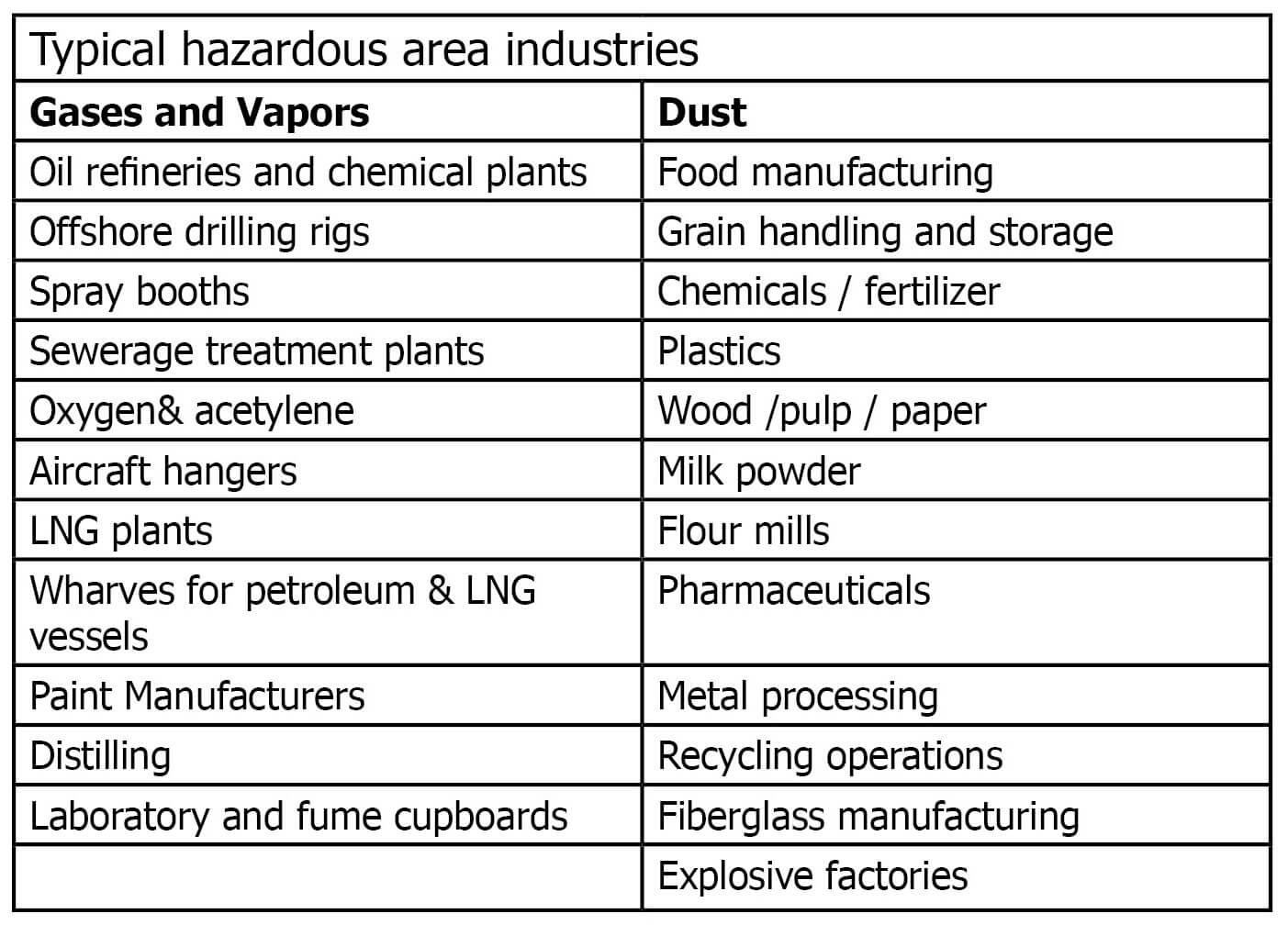The Buzz on Roar Solutions
Wiki Article
Not known Details About Roar Solutions
Table of ContentsThe Ultimate Guide To Roar SolutionsFacts About Roar Solutions RevealedFascination About Roar Solutions
In order to secure setups from a potential surge an approach of evaluating and identifying a potentially harmful area is called for. The function of this is to guarantee the right choice and installation of devices to eventually protect against an explosion and to ensure safety of life.
(https://yoomark.com/content/join-roar-solutions-our-comprehensive-hltaid011-provide-cpr-first-aid-course-and-gain)
No equipment ought to be mounted where the surface temperature of the tools is higher than the ignition temperature of the given hazard. Below are some common dirt unsafe and their minimal ignition temperature. Coal Dirt 380C 225C Polythene 420C (melts) Methyl Cellulose 420C 320C Starch 460C 435C Flour 490C 340C Sugar 490C 460C Grain Dust 510C 300C Phenolic Resin 530C > 450C Aluminium 590C > 450C PVC 700C > 450C Residue 810C 570C The possibility of the risk existing in a concentration high enough to trigger an ignition will certainly differ from place to place.
In order to classify this risk a setup is divided into areas of threat relying on the quantity of time the unsafe is existing. These locations are described as Areas. For gases and vapours and dusts and fibers there are three areas. Zone 0 Area 20 A hazardous environment is highly most likely to be existing and might be present for long periods of time (> 1000 hours annually) or perhaps continuously Zone 1 Area 21 An unsafe environment is possible however unlikely to be existing for long periods of time (> 10 450 C [842 F] A classification of T6 indicates the minimal ignition temperature level is > 85 C [185 F] Hazardous area electrical equipment perhaps created for use in greater ambient temperatures. This would certainly suggested on the rating plate e.g. EExe II C T3 Ta + 60C( This means at 60C ambient T3 will certainly not be gone beyond) T1 T1, T2, T3, T4, T5, T6 T2 T2, T3, T4, T5, T6 T3 T3, T4, T5, T6 T4 T4, T5, T6 T5 T5, T6 T6 T6 A T Class rating of T1 implies the optimum surface area temperature created by the tool at 40 C is 450 C. Assuming the linked T Course and Temperature ranking for the equipment are suitable for the location, you can constantly use an instrument with a much more rigorous Division ranking than required for the location. There isn't a clear solution to this inquiry sadly. It actually does rely on the sort of equipment and what fixings require to be accomplished. Devices with details test treatments that can not be executed in the field in order to achieve/maintain 3rd party ranking. Must come back to the manufacturing facility if it is prior to the devices's solution. Field Repair By Authorised Employee: Difficult screening might not be called for nevertheless details procedures might require to be followed in order for the tools to maintain its 3rd party rating. Authorised employees must be employed to carry out the job properly Repair service need to be a like for like substitute. New part need to be taken into consideration as a direct replacement needing no unique screening of the tools after the fixing is full. Each item of equipment with a harmful score need to be reviewed individually. These are laid out at a high level listed below, however, for more thorough information, please refer straight to the guidelines.
The Buzz on Roar Solutions
The tools register is a thorough database of tools documents that consists of a minimum collection of fields to identify each item's area, technological specifications, Ex lover classification, age, and environmental information. The proportion of Thorough to Shut assessments will certainly be figured out by the Devices Danger, which is evaluated based on ignition risk (the chance of a resource of ignition versus the likelihood of a flammable atmosphere )and the hazardous area classification( Zone 0, 1, or 2). Implementing a durable Risk-Based Assessment( RBI )technique is important for ensuring conformity and security in taking care of Electrical Tools in Hazardous Areas( EEHA).
The smart Trick of Roar Solutions That Nobody is Discussing

In regards to explosive risk, a harmful area is a setting in which an eruptive atmosphere exists (or might be expected to be existing) in amounts that need special precautions for the construction, setup and use of tools. Roar Training Solutions. In this write-up we discover the challenges dealt with in the workplace, the danger control measures, and the called for proficiencies to work securely
These compounds can, in particular conditions, develop eruptive environments and these can have significant and heartbreaking consequences. Many of us are acquainted with the fire triangle remove any kind of one of the 3 components and the fire can not take place, however what does this mean in the context of hazardous areas?
In many instances, we can do little about the levels of oxygen in the air, however we can have substantial impact on resources of ignition, as an example electrical devices. Dangerous areas are recorded on the harmful location category illustration and are identified on-site by the triangular "EX" sign. Right here, my blog among various other vital details, areas are divided right into 3 kinds relying on the hazard, the possibility and period that an explosive ambience will certainly exist; Area 0 or 20 is regarded one of the most dangerous and Area 2 or 22 is regarded the least.
Report this wiki page